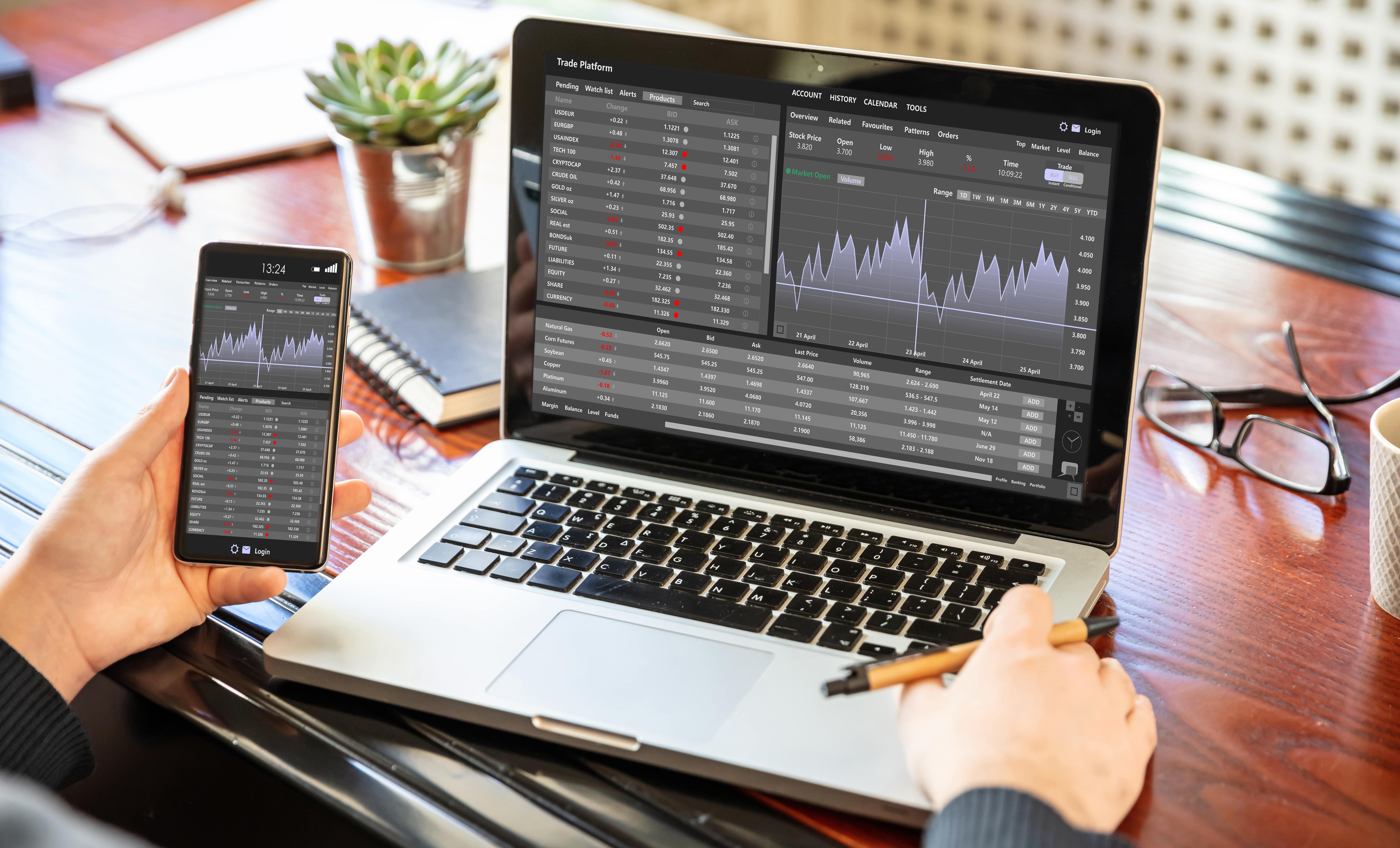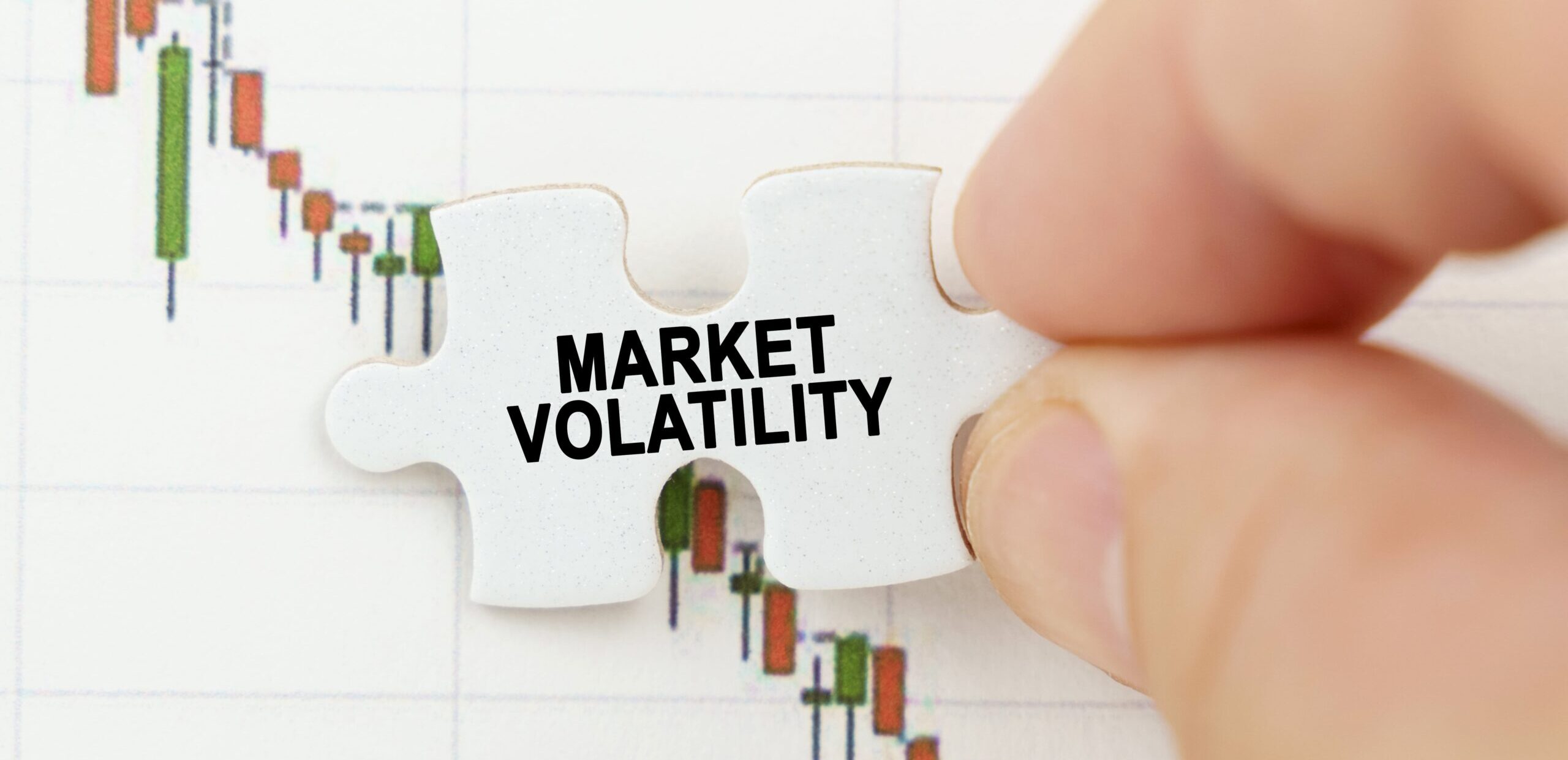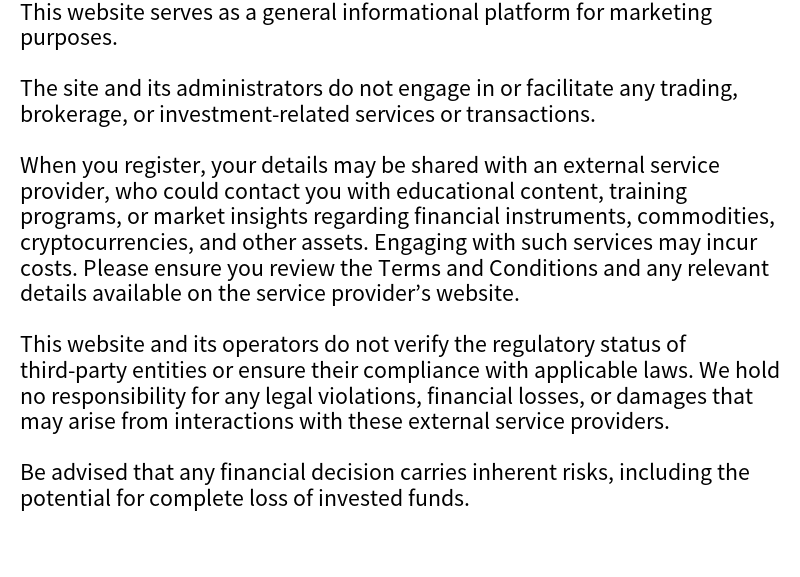Before starting to trade cryptocurrency options, it is important to research and understand the market, choose a reputable exchange that supports crypto derivatives, complete KYC verification, deposit funds, practise on a demo account, and execute trades based on sound strategies. Keep in mind that trading cryptocurrency options involves a high level of risk and may not be suitable for all investors.
Understanding Crypto Options
Before delving into the intricacies of trading crypto options, it’s crucial to grasp the fundamentals. Crypto options are financial derivatives that enable investors to speculate or hedge their digital asset portfolios. These options contracts provide holders with the right but not the obligation to buy or sell a specific amount of an asset at a predetermined date in the future.
Similar to traditional finance, there are two main types of crypto options contracts: European and American. European options can only be exercised at expiration, while American options can be exercised at any time until their expiry date. This distinction affects how these contracts are traded and managed.
Let’s say you purchase a call option for Bitcoin with a strike price of $50,000 and an expiration date of three months from now. If the price of Bitcoin surpasses $50,000 before the expiration date, you can exercise your option and buy Bitcoin at the agreed-upon price. On the other hand, if the price remains below $50,000 or fails to reach it, you can choose not to exercise your option and let it expire worthless.
It’s important to note that options positions can be categorised as in the money (ITM), at the money (ATM), or out of the money (OTM) based on where the current market price stands relative to the strike price. For call options, being ITM means the market price is above the strike price, while for put options, being ITM means the market price is below the strike price.
Furthermore, options contracts can either be physically settled or cash settled. In traditional finance, physical settlement involves taking actual delivery of the underlying asset. However, in crypto markets such as Bitcoin, which does not exist in physical form, most options contracts are settled in cash. This means that upon exercising an option or letting it expire worthless, any gains or losses would be settled in fiat currency instead of the underlying cryptocurrency.

Trading venues for crypto options range from established traditional securities exchanges like CME to dedicated crypto trading platforms such as Bit.com, ByBit, Deribit, and OKX. While these platforms provide opportunities to engage in options trading, it’s important to recognise that trading cryptocurrency options carries a higher level of risk compared to spot trading Bitcoin. Therefore, proper risk management and education are vital when venturing into this market.
Now that we have laid the foundation by understanding what crypto options are, let’s explore the different types of crypto options contracts available for traders.
- Crypto options are financial derivatives that provide investors with the right but not the obligation to buy or sell a specific amount of cryptocurrency at a predetermined date in the future. There are two main types of crypto options contracts: European and American. These contracts can be physically or cash-settled, and it’s important to manage risks properly when trading them. Different platforms offer opportunities for crypto options trading, but it’s crucial to understand their nuances before venturing into this market.
Distinct Types of Crypto Options
When it comes to crypto options, there are various types of contracts available in the market, each with its unique characteristics. Understanding these options is essential for making informed trading decisions. Let’s take a closer look at some of the most common types:
- Call Options: Call options give the holder the right to buy the underlying asset at a predetermined price called the strike price. Traders typically purchase call options when they anticipate an asset’s price will rise.
- Put Options: Put options grant the holder the right to sell the underlying asset at a predetermined price. These options are often utilised as hedging tools or used by traders who expect an asset’s price to decline.
- Vanilla Options: Vanilla options are standard call or put options without any additional features or complexities. They offer traders straightforward exposure to an asset’s price movement based on their anticipated direction.
- Binary Options: Binary options are simplified options contracts with only two possible outcomes: either a fixed monetary amount or nothing at all depending on whether the option expires in-the-money or out-of-the-money.
- Exotic Options: Exotic options refer to more complex option contracts that deviate from standard vanilla options’ structure and terms. These can include barrier options, ladder options, and more. These types of options cater to traders with specific strategies or risk profiles.
Let’s say you anticipate a significant price movement in Ethereum due to an upcoming event. You could consider purchasing call options on Ethereum to capitalise on the potential upside if your prediction turns out to be correct. On the other hand, if you are concerned about a market downturn, using put options would allow you to protect yourself against potential losses.
Now that we have explored the various types of crypto options contracts available, it’s time to understand how to choose a suitable crypto options trading platform.
Choosing a Crypto Options Trading Platform
When it comes to trading crypto options, choosing the right platform is key to your success. With the growing popularity of crypto options, there are several platforms available in the market. It’s important to consider various factors before making a decision.
One crucial aspect to consider is liquidity. You’ll want to ensure that the platform you choose has sufficient liquidity to execute your trades effectively. Higher liquidity results in tighter bid-ask spreads and minimises slippage, which can eat into your profits. Look for platforms with a large user base and high trading volume to ensure optimal liquidity.
Another important factor is the fee structure of the platform. Different platforms have different fee models, including transaction fees for executing trades and funding fees for holding positions overnight. Take note of the fee structure and compare it with other platforms to ensure it aligns with your trading strategy and goals.

Additionally, consider the user experience provided by the platform. A user-friendly interface and intuitive navigation can make a significant difference in your trading experience, especially for beginners. Look for platforms that offer comprehensive educational resources, tutorials, and customer support to help you navigate through the complexities of crypto options trading.
For instance, imagine you’re a beginner trader exploring crypto options for the first time. You may find a platform with a simple and visually appealing interface, like Oil Profit, more appealing than one with a cluttered and complex layout. Additionally, having access to educational materials and responsive customer support can provide peace of mind as you venture into this new realm.
Lastly, ensure that the platform prioritises security and takes robust measures to protect users’ funds and personal information. Look for platforms that implement features like two-factor authentication (2FA), cold storage for cryptocurrencies, and regular security audits. It’s crucial to choose a platform with a track record of prioritising user security.
Comparison of Popular Platforms
To make the task of choosing a crypto options trading platform easier, let’s compare some of the popular options available in the market:
- Bybit Options: Bybit stands out as a premier and trusted cryptocurrency options trading platform. It offers options contracts on Bitcoin, Ethereum, and Solana. With superior liquidity, competitive fees, and unparalleled security measures, it is a preferred choice for many traders.
- Deribit: Deribit dominates the market with over 90% of open interest in BTC and ETH options. It is a preferred choice for institutional and sophisticated investors, offering high leverage and an extensive array of trading options.
- Binance Options: Binance is optimal for diversifying portfolios, with broad support for futures and perpetual contracts. Its distinctive feature includes stablecoin-margined options priced and settled in USDC or USDT.
- Robinhood Crypto Options: Renowned for commission-free stock, ETF, and cryptocurrency trading, Robinhood also offers a user-friendly interface that makes it attractive to US-based traders exploring crypto options.
- OKX Options: OKX is an emerging derivatives exchange known for its high liquidity, low fees, intuitive interface, and plans to expand into the American market.
Each platform has its own unique features and advantages. Consider your specific trading needs, such as available assets, leverage options, and account requirements, before making your decision.
Now that we have explored the considerations when choosing a crypto options trading platform and compared some popular platforms in the market let’s move on to the next step – creating a crypto options trading account.
Creating a Crypto Options Trading Account
To embark on your crypto options trading journey, the first step is to create a trading account on a suitable platform. Here’s a detailed guide on how to do so:
- Choose a reputable crypto options trading platform: There are several platforms available in the market, such as Binance, ByBit, and OKX. Research and select one that aligns with your trading goals, security requirements, and user-friendly interface.
- Register an account: Visit the chosen platform’s website and click on the “Sign Up” or “Register” button. Fill in the necessary information, including your email address and password. Some platforms may require additional verification steps for enhanced security.
- Complete KYC verification: Most reputable crypto options trading platforms adhere to regulatory standards, such as Know Your Customer (KYC) procedures. This process ensures legitimacy and helps prevent fraud and money laundering. You will typically be asked to provide identifying information such as your legal name, address, date of birth, and national ID number.
- Secure your account: After completing the registration process, it’s crucial to enhance the security of your trading account. Enable two-factor authentication (2FA) using an authenticator app like Google Authenticator or Authy. This adds an extra layer of protection against unauthorised access.
- Fund your account: Once you have successfully registered and secured your trading account, it’s time to add funds. Navigate to the “Deposit” section on the platform and select your preferred cryptocurrency or fiat currency method to fund your account. Follow the instructions provided by the platform to complete the deposit process.
- Explore available options: With funds in your account, you can now explore various crypto options available for trading on the platform. Take some time to familiarise yourself with different strategies and understand the risks associated with each option.
Now that you have created a crypto options trading account, it is essential to understand the KYC verification process to comply with regulatory requirements and ensure a secure trading environment.
- According to the Cambridge Centre for Alternative Finance, as of 2020, over 100 million people around the world own Bitcoin or other cryptocurrencies, indicating a possible market for crypto options.
- A report from skew Analytics, one of the leading data providers in the cryptocurrency derivatives space, noted in 2022 that the monthly volume on Bitcoin options crossed over $8 billion for the first time.
- As revealed by Chainalysis’s 2021 Market Intel Report, despite being considered a high-risk form of trading, cryptocurrency derivatives exchanges reported an average trading volume of $500 billion to $1 trillion per month in the same year.
KYC Verification Process
KYC (Know Your Customer) verification is a critical step in creating a safe and compliant trading environment for all participants. The aim of KYC in the context of crypto options trading is to verify your identity, assess risk factors, and prevent illicit activities such as money laundering. Here’s what you need to know about the KYC verification process:
- Submission of required documents: Once you have registered on the crypto options trading platform, you will typically be prompted to undergo KYC verification. You will need to provide scanned or photographed copies of your identification documents, which may include your passport, driver’s licence, or national ID card.
- Identity verification: The platform will use advanced identity verification services to authenticate the provided documents and match them with the information you provided during registration. This step ensures that you are who you claim to be and helps prevent identity theft or impersonation.
- Address verification: In addition to verifying your identity, platforms may require proof of address documentation, such as utility bills or bank statements. This step confirms your residential address and further strengthens the platform’s compliance with regulatory requirements.
- Due diligence checks: Crypto options trading platforms follow stringent due diligence procedures to evaluate the legitimacy of funds used for trading. They assess the source of your wealth and funds used for deposits to ensure they are not associated with illegal activities.
- Ongoing monitoring: Platforms continue to monitor customer accounts for suspicious activities even after completing the initial KYC verification process. This ongoing monitoring helps identify any unusual patterns or transactions that may indicate potential fraudulent activities.
- Preserving privacy and security: Reputable crypto options trading platforms prioritise customer privacy and employ advanced security measures to safeguard personal and financial information. They adhere to strict data protection policies and employ encryption technologies to mitigate the risk of data breaches.
By understanding and complying with the KYC verification process, you contribute to the overall security and compliance of the crypto options trading ecosystem. Now that we have covered the creation of a crypto options trading account and the KYC verification process, let’s explore different trading strategies that can help you navigate this dynamic market landscape.
Crypto Options Trading Strategies
When venturing into crypto options trading, it’s essential to have a well-defined strategy that aligns with your financial goals and risk tolerance. Developing a trading strategy helps you make informed decisions and navigate the volatile market more effectively. Here are a few popular strategies:
- Long Call / Long Put: This strategy involves buying call or put options on a particular cryptocurrency, depending on whether you anticipate an upward (call) or downward (put) movement in its price. It provides the opportunity for significant profits if your prediction is correct.
- Covered Call: In this strategy, traders hold a long position in a cryptocurrency and simultaneously sell call options against it. The aim is to generate additional income through collecting the premium from selling the options while still maintaining ownership of the asset.
- Straddle: This strategy involves buying both a call option and a put option with the same strike price and expiration date. Traders employ this strategy when they believe that the cryptocurrency’s price will experience substantial price volatility but are unsure about its direction.
- Strangle: Similar to the straddle, this strategy involves buying both a call option and a put option, but with different strike prices. Traders utilise this strategy when they anticipate significant market movement but are uncertain about its direction.
- Spreads: Spreads involve simultaneously buying and selling options on the same underlying cryptocurrency but with different strike prices or expiration dates. Popular spread strategies include bull spreads, bear spreads, and butterfly spreads.
Remember, each strategy has its own advantages and risks, so it’s crucial to understand them thoroughly and consider factors such as market conditions, volatility, and your risk tolerance before implementing them.
Just as an experienced chess player anticipates their opponent’s moves to stay one step ahead, crypto options traders carefully select their strategies to navigate the complex market dynamics effectively.
When to Buy or Sell
Knowing when to buy or sell a crypto option is crucial for maximising profits and minimising losses. Here are some factors to consider:
- Market Analysis: Conduct thorough research and analyse market trends before making any trading decisions. Study historical price data, technical indicators, and fundamental analysis to gauge the market sentiment.
- Volatility: Cryptocurrency markets are known for their high volatility. Higher volatility can present opportunities for larger profits but also carries increased risks. Consider your risk appetite and adjust your trading strategy accordingly.
- News and Events: Stay informed about relevant news and events that can impact cryptocurrency prices. Major announcements, regulatory changes, or partnerships can create significant price movements. Be alert to take advantage of such opportunities.
- Options Expiration: Pay attention to the expiration date of your options contract as it affects the time frame within which you can exercise your rights. Plan your trading actions accordingly to avoid any missed opportunities due to expiration.
- Risk Management: Implement proper risk management strategies to limit potential losses. Set stop loss orders or employ hedging techniques to protect your capital from adverse market movements.
Ultimately, the decision to buy or sell a crypto option should be based on a combination of careful analysis, risk assessment, and adherence to your trading strategy.
By applying these strategies and considering the right timing for buying or selling, traders can enhance their chances of success in crypto options trading.
Risk Assessment in Crypto Option Trading
Before diving into the world of crypto option trading, it is crucial to thoroughly assess and understand the associated risks. Cryptocurrencies are known for their volatility, and this element heightens the risk factor in options trading. While there are potential profits to be made, losses can also occur if proper risk management strategies are not implemented.
It is important to note that cryptocurrencies can be highly volatile and risky assets to trade. The prices of digital currencies can fluctuate dramatically within short periods, influenced by various factors such as market sentiment, regulatory actions, technological advancements, and global economic events.
When engaging in crypto option trading, one of the risks to consider is the possibility of losing your entire investment. Options contracts come with a premium that you pay upfront, which serves as the cost of participating in the trade. If the market does not move in your favour within the predetermined time frame, the option contract may expire worthless, resulting in a loss of the premium paid.
Furthermore, it is essential to be cautious when using leverage in crypto options trading. While leverage can amplify potential profits, it also magnifies losses. High leverage amounts can be particularly risky when market conditions are volatile or uncertain. It’s important to understand that even small price movements can have a significant impact on leveraged positions.
For instance, let’s say you decide to use high leverage on a crypto options trade. If the market unexpectedly turns against your position, your losses can quickly accumulate and potentially exceed your initial investment. It is crucial to exercise caution and only use leverage amounts that you are comfortable with and can afford to lose.
To mitigate risk in crypto options trading, it is recommended to employ risk management strategies such as diversification and hedging. Diversifying your crypto portfolio by investing in multiple digital assets can help spread out the risk and reduce potential losses if one particular asset underperforms.
Additionally, hedging can be an effective risk management technique. Hedging involves buying or selling assets to offset potential losses in the event of adverse price movements. One simple hedging strategy is called dollar-cost averaging (DCA), where investments are made incrementally at regular intervals, reducing the impact of short-term market volatility.
Now that we have discussed the importance of risk assessment in crypto option trading, let’s explore one of the key factors that contribute to this risk: market volatility.
Impact of Market Volatility
Market volatility plays a significant role in crypto option trading and can greatly affect the outcome of your trades. Volatility refers to the rapid and substantial price fluctuations in an asset or market. In the world of cryptocurrencies, this volatility is often more pronounced compared to traditional financial markets.
The impact of market volatility on crypto option trading can be twofold. On one hand, increased volatility can present opportunities for substantial profits as it creates larger price swings and potential movements that options traders can take advantage of. However, it also amplifies risks as unpredictable market conditions can lead to unexpected losses if proper risk management strategies are not implemented.

During times of high market volatility, options premiums tend to be higher due to the increased uncertainty and potential for significant price movements. This means that purchasing options contracts may come at a higher cost, affecting potential profitability. Conversely, selling options during volatile periods can provide opportunities for higher premium income but also exposes traders to additional risks.
For example, if you anticipate a sharp price move in a cryptocurrency but are uncertain about its direction, you might consider purchasing both a call option and a put option. This strategy, known as a straddle, allows you to profit regardless of whether the price goes up or down significantly. However, keep in mind that this strategy has its own set of risks and requires careful monitoring of market conditions.
It’s important to note that while increased volatility can present opportunities for potential gains, it also raises the stakes and requires heightened diligence. Traders must be prepared for unexpected price movements and have a solid risk management plan in place to mitigate potential losses.
As we have explored the impact of market volatility on crypto option trading, it’s crucial to understand the execution process of a crypto options trade to navigate this dynamic landscape successfully.
Executing a Crypto Options Trade
Now that you have a basic understanding of crypto options trading, let’s dive into the process of executing an actual trade. This step-by-step guide will help demystify the process and equip you with the necessary knowledge to take action in the crypto options market.
The first thing you need to do is choose a reliable cryptocurrency options trading platform. There are several reputable platforms available, such as Binance, ByBit, and OKX. Research each platform carefully, considering factors like fees, security measures, user interface, and available trading pairs. Once you’ve selected a platform that suits your requirements, create an account and complete any necessary identity verification steps.
Next, familiarise yourself with the options available on the platform. As mentioned earlier, there are two types of crypto options: call options and put options. Call options give you the right to buy a crypto asset at a predetermined price (known as the strike price) at or before the expiration date. Put options, on the other hand, give you the right to sell a crypto asset at a predetermined price.
When it comes to styles of crypto options, there are American options and European options. American options can be exercised at any time before the expiration date, while European options can only be exercised on the specified settlement date.
Let’s consider an example to illustrate how executing a crypto options trade works. Say you believe that Bitcoin’s price will increase over the next month. You could purchase a call option for Bitcoin with a strike price of $40,000 and an expiration date one month from now. If Bitcoin’s price indeed rises above $40,000 by the expiration date, you can exercise your option and profit from the difference between the strike price and the actual market price.
Keep in mind that crypto options trading operates on a decentralised exchange and typically involves 24/7 trading. It differs from traditional options trading in terms of the market it operates within and the accessibility of trading at any time.
Now that you have a grasp on executing a crypto options trade, let’s move on to the important step of analysing and placing your first trade.
Analysing and Placing Your First Trade
Before jumping into the world of crypto options trading, it’s crucial to analyse the market and make informed decisions. Here are some steps to guide you through the process.
Firstly, conduct thorough research on the underlying cryptocurrency that you wish to trade options for. Understand its historical price movements, market trends, and any upcoming events or news that may impact its price. This knowledge will help you make more accurate predictions and determine whether a call or put option is more suitable.
Next, utilise technical analysis tools to examine charts and identify patterns. Technical analysis involves studying past price movements and indicators to predict future price movements. Look for support and resistance levels, moving averages, and other technical indicators that can provide insights into potential entry or exit points for your trade.

Once you have analysed the market and determined your strategy, it’s time to place your first trade. Access your chosen trading platform and input the necessary details such as the type of option (call or put), the strike price, expiration date, and the amount you want to invest.
Remember that risk management is vital in trading. Consider setting stop-loss orders to limit potential losses if the market goes against your prediction. Similarly, set profit targets to secure your gains when the market moves in your favour.
For example, let’s say you have analysed Bitcoin’s price movement using technical analysis tools and identified an upward trend with strong support at $45,000. You decide to purchase a call option with a strike price of $46,000 and an expiration date two weeks from now. If Bitcoin’s price reaches $50,000 before expiration, you can sell the option and make a profit.
Armed with these crucial steps, you are now ready to embark on your crypto options trading journey. Remember, practise and continuous learning are key to enhancing your skills and making informed trading decisions.
FAQ
How do you choose the right platform for trading crypto options?
Choosing the right platform for trading crypto options requires careful consideration. Look for platforms that offer a user-friendly interface, a wide range of cryptocurrencies to trade, competitive fees, robust security measures, and reliable customer support. Additionally, consider platforms that have a good track record and positive user reviews. According to recent statistics, some popular and reputable platforms for trading crypto options include Binance Options, Coinbase Pro, and BitMEX.
What are the risks associated with trading crypto options?
The risks associated with trading crypto options include volatility, lack of regulation, and potential for scams. Cryptocurrencies are known for their price volatility, making it difficult to accurately predict market movements. Additionally, the decentralised nature of cryptocurrencies poses a challenge in terms of regulatory oversight and investor protection. Furthermore, the rise of fraudulent schemes and scams in the crypto industry adds another layer of risk, with billions of dollars lost to such activities in recent years. It is crucial for traders to thoroughly research and understand these risks before engaging in crypto options trading.
What strategies can be used for successful crypto options trading?
There are several strategies that can be employed for successful crypto options trading. One strategy is the long straddle, where an investor buys both a call and a put option at the same strike price. This strategy benefits from high market volatility and allows the trader to profit regardless of the direction in which the price moves. Another effective strategy is directional trading, where investors analyse market trends and use technical analysis indicators to predict future price movements. Historical data shows that these strategies have yielded significant returns, with some traders experiencing up to 80% profitability in their options trades.
What is the difference between trading cryptocurrencies and trading crypto options?
Trading cryptocurrencies involves buying and selling digital currencies in the hopes of making a profit based on their market value fluctuations. On the other hand, trading crypto options involves speculating on the future price movement of a specific cryptocurrency within a defined time frame. While both involve risk, trading crypto options allows traders to hedge their positions and potentially profit from both rising and falling markets, providing more flexibility compared to traditional cryptocurrency trading. According to a recent survey by CryptoCompare, the average daily trading volume of crypto options has significantly increased by 75% in the past year, highlighting its growing popularity among traders seeking alternative investment strategies in the crypto market.
How do you stay informed about market trends and news related to crypto options trading?
Staying informed about market trends and news related to crypto options trading in 2023 is crucial for success. To stay updated, I highly recommend utilising a combination of reliable online sources, such as news websites, blogs, and social media accounts dedicated to cryptocurrency and financial markets. Additionally, subscribing to newsletters or joining communities/groups that focus on crypto trading can provide valuable insights and real-time updates. With the exponential growth of the crypto industry, there is no shortage of information available. Just remember to verify the credibility of sources and prioritise quality over quantity.


